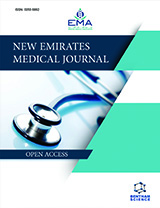Abstract
Background: Operative hysteroscopy is a surgical technique for various procedures of the uterus, for example, hysteroscopic myomectomy. This has been an effective alternative to conventional hysterectomy and has produced better surgical outcomes in terms of faster recovery, less post-operative pain and better patient satisfaction.
Case Presentation: A 49-year-old female was presented to the PAC clinic for hysteroscopic myomectomy for her dysfunctional uterine bleeding. There was no medical history of any previous medical or surgical problems. Her physical examination and routine labs did not reveal any abnormalities. She was labeled an ASA class 1 patient. Hysteroscopic myomectomy under spinal anesthesia was approved by the patient. On the day of the surgery, the patient was presented to the preoperative patient holding and was calm and comfortable. Vital parameters recorded were under normal limits. 20 G intravenous cannula was taken on her left dorsum of the wrist, and she was wheeled to the operating room. She was connected to ASA standard monitors, and her blood pressure, pulse rate, and spo2 were recorded. Spinal anesthesia was performed in a sitting position with a 27 G pencil point needle in a single attempt, and the procedure was regular. The level of anesthesia was ascertained to be till T6, and the patient was handed over to the surgical team. Surgery was started in a low lithotomy position. 65 minutes into the surgery, the patient started to complain of intra-abdominal pain, difficulty breathing, and started being restless. Blood pressure was 133/83mmhg, and SpO2 dropped from 98% to 86%. Her pulse rate was 112 beats per minute.
Conclusion: The patient’s abdomen was examined by moving the operative drapes, and gross abdominal distention was noted. Lung auscultation revealed crepitations on the basal lobes. Immediately, distention syndrome was suspected.



























